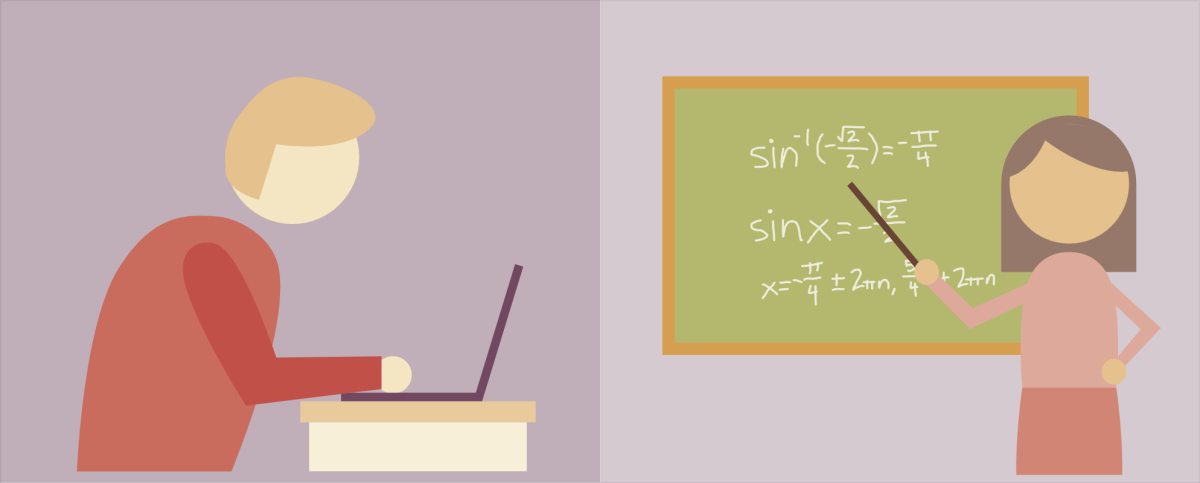Many students taking geometry are very familiar with flipped classrooms. Watching videos outside of class and working on the homework in class is a staple practice in many of the math classes. Every student and teacher has a very different idea of what works best, so there’s quite a bit of conflict about it.
“[There are] very few things I hate more than flipped learning,” sophomore Brooke Lovell said. “It just makes me frustrated thinking about it.”
Biology teacher Azie Pickert generally agreed with Lovell. During Covid, her class was structured similarly to a flipped classroom by necessity.
“What we noticed was that — especially teaching freshmen — we’re like, ‘This can’t be successful,’” Pickert said.
The biggest struggle was holding students accountable when they weren’t motivated to do any of the work themselves, which is also one of the things that frustrated Lovell the most.
“I usually fall behind and then end up cramming the night before the test — it’s bad,” Lovell said. “I don’t like that I’m not on pace.”
On top of her other concerns, Lovell thinks it’s harder to get help from the teacher.
“The teacher says, ‘Oh, it gives more opportunity for questions,’” Lovell said. “But there are just more questions and I can’t ask my questions because everyone has questions.”
On the other hand, Pickert thought the exact opposite.
“You’re able to dive in and answer questions,” she said. “It’s nice to have a little bit of that preknowledge and then having more meaningful discussions in the classroom.”
Despite the conflict about flipped learning, there was one thing everyone agreed on: the time commitment is greater than in traditional teaching.
“[It] takes a lot more prep time,” math teacher Tyler Randall said. “You’re having to record the videos outside of the school day.”
Similarly, Pickert feels everything is much simpler when you keep instruction in the classroom.
“If I know the material well enough, I could pop up some pictures, pop up a few slides, be able to actually discuss, and then it’s real time,” Pickert said.
Not only does it take longer to plan and create the lessons, but the homework can take longer, too.
“Most of the time, when it’s normal learning, I can finish the homework in class,” Lovell said. “[With] flipped learning, you spend 40 minutes of your own time at home learning something when you could be doing it in class.”
Additionally, teacher-student relationships have very different dynamics when using flipped learning.
“I don’t care about their class as much, so I don’t try as much, and then I get a worse grade,” Lovell said. “I just hate their class and dread it every time.”
Pickert thinks flipped classrooms can actually help students’ relationships with their teachers.
“Depending on the type of teacher you are, you can really build those relationships well and make your kid feel like they don’t have to ask questions in front of everybody,” she said.
Randall takes more of a middle ground, acknowledging that there are problems, but they can be avoided.
“If you’re not doing it the right way, that leads to [negative responses],” he said. “But if a teacher is doing it right, they’re still walking around the room, they’re still interacting with their kids and it actually opens up more time for those side convos. If it’s done right, it actually leads to better connection with the students.”




